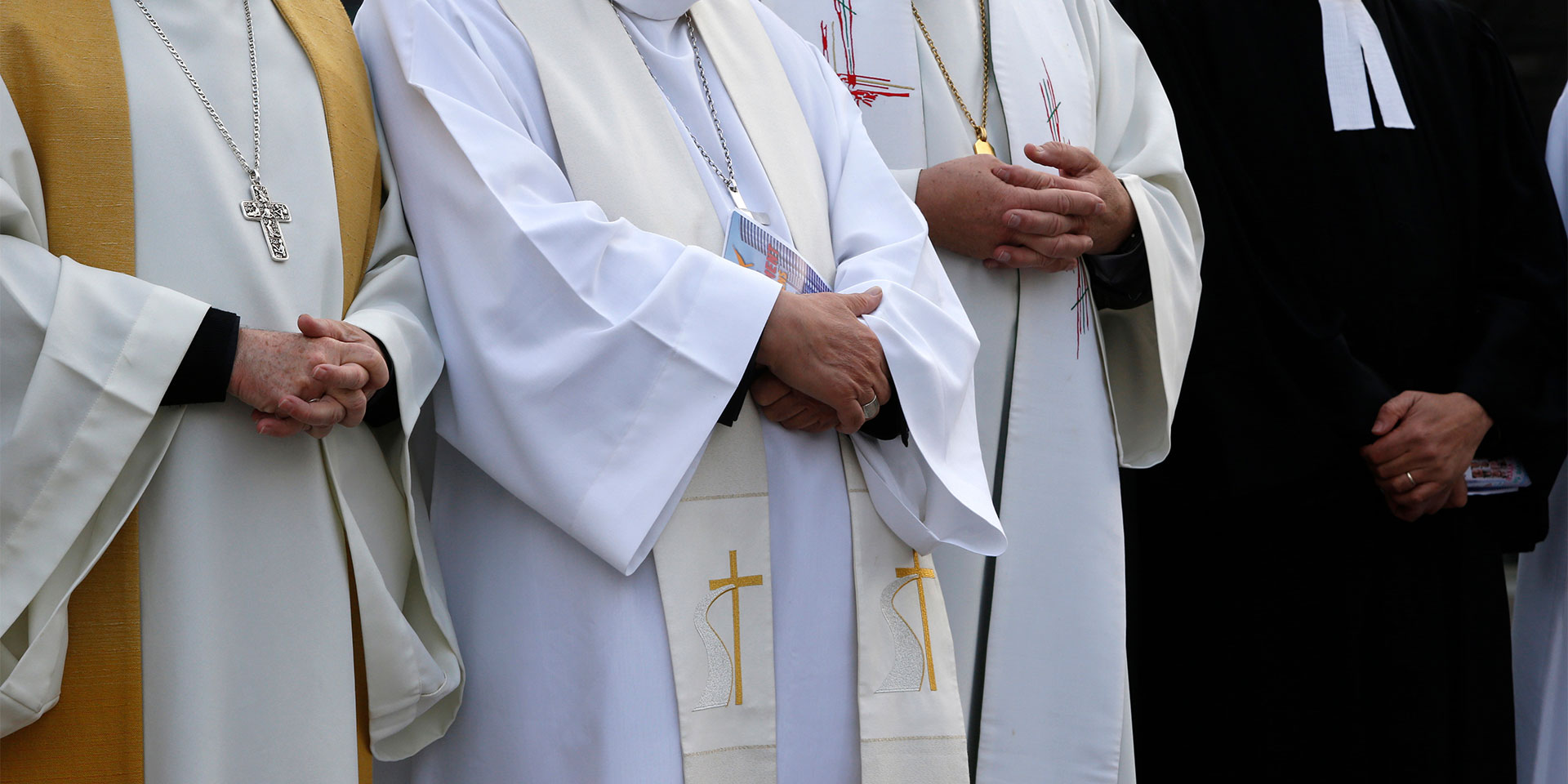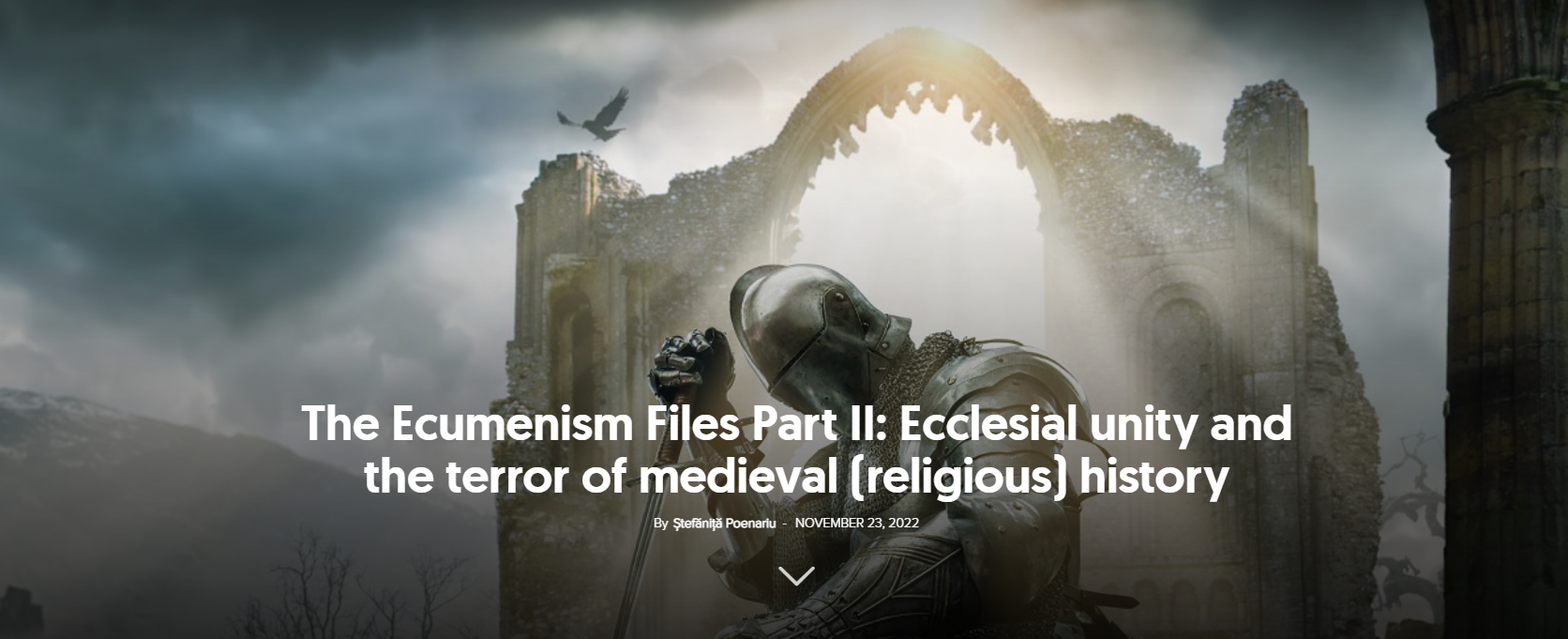In the face of the hundreds of Christian confessions that exist today, the ecumenical efforts of the last decades have invariably raised some complementary and equally legitimate questions: Is Jesus’ desire “that all of them may be one” (John 17:21) possible?
If so, what should we do to make it a reality, and how? If not, then who is right: those who see the idea of Christian unity as a utopia, or those who see it as a trap set by the devil to catch the righteous?
Consequently, what would be the wisest attitude of Christians towards ecumenical efforts: enthusiasm, trust, scepticism, optimism, support or opposition? One thing must be said from the very beginning—Christians have no reason to “oppose the unity for which Christ Himself prayed,” but instead, every Christian must be interested in understanding the nature of the unity[1] that the ecumenical initiatives seek or can obtain and, at the same time, the methods used in the attempts to achieve it.
In the rich diversity of ecumenism, three major religious branches stand out: Orthodoxy, Catholicism, and Protestantism. The first two have as a legacy, from the first Christian centuries, a significant body of common doctrines, the same canons of discipline, and the same form of worship.
They are, however, separated by an apparently irreconcilable doctrinal and liturgical chasm.[2] In addition, the differences contributed by the numerous confessions born after the Reformation of the 16th century can easily justify the conclusion that ecumenism still remains an almost utopian ideal.
Recent history, however, seems to demonstrate the strength of ecumenism. In the 19th century, the term “ecumenical” was used within the Evangelical Alliance, “expressing the overcoming of national, confessional and social borders”.[3] At the beginning of the 20th century, through the contribution of Nathan Söderblom, Archbishop of Uppsala and the creator of the notion of ecumenism, the expression “ecumenical movement” acquired a standardised meaning, defining the integrated efforts towards Christian unity. Surprisingly, such attempts to strengthen unity have been necessary ever since the beginning of the Christian church.
The struggle for power and the first shadows of the Christian schism
Christians of the primary church perceived unity as a spiritual desideratum[4] defined by Christ: “For the Son of Man came to seek and to save the lost”(Luke 19:10). Loving “one another” (John 13:35) was the proof of belonging in Christ and a criterion for recognising the authenticity of a Christian or church. Unity was achieved at the level of the local church led by its bishop, based on the revealed Word and faith, and was illustrated by the metaphor of a body whose head is Christ.
The differences that arose in the apostolic church between Judaizers (Jewish Christians who wanted to preserve many of the Mosaic rituals) and Christianised people, meaning the proselytes, led to the organisation of a council/synod in Jerusalem (in the year 49-50), where topics that had become sensitive were debated and resolved. In the apostolic period, Jerusalem represented the main religious centre of the Christian church and the source and norm of the religious practice for the other communities.
After the destruction of Jerusalem and the end of Palestinian Judeo-Christianity, the churches were organised according to the imperial model, in several religious centres. Antioch and Ephesus in the East and Rome in the West were the first religious centres recognised as authoritative.[5]
The fourth century provided the framework for the emergence of a new religious centre and the revival of the first. Following the alleged theophany in which the cross of Christ was revealed to him as an assurance of victory in battle, Emperor Constantine the Great became interested in the Christian faith and the place where Christ the Saviour died and was resurrected.
Thus, the city of the cross (Jerusalem) and the city built after the victory of the cross (Constantinople) caught the emperor’s attention.[6] Rome, Constantinople, Jerusalem, Alexandria, and Antioch, the most important cities of the Empire, became the residences of the patriarchs, as the importance of the cities became a decisive criterion in the organisation of the centres of the Christian church.
The struggle for power and the controversial decisions of the ecumenical councils led to the accumulation of tension between the patriarchs of the five religious centres. The third canon of the Second Ecumenical Council of Constantinople, of 381, recognises the title of “patriarch” and the rank of “first after the bishop of Rome” to the Bishop of Constantinople.
This decision displeased the bishops of Rome, Antioch, and Alexandria. The patriarch in Rome felt his position threatened by the fact that the Empire had its capital in Constantinople, and the bishops of Antioch and Alexandria were dissatisfied with their inferior placement among the five centres of influence.
Naming Constantinople the city of the senate and the emperor, along with its consideration as the “new Rome,” imposed its acceptance as a religious centre of authority in the eastern territory. Dissatisfaction with this fact represented one of the first reasons for the break in the Christian church, fueling the process of polarisation of the two wings: the Western Church, with its centre in Rome, and the Eastern Church, with its centre in Constantinople.
The imperial schism and the deepening of the ecclesiastical chasm
At the crossroads between the second and third centuries, discussions about the nature of Christ were taking place in the Christian church. Arianism (according to which Jesus is not eternal, but was created by God), named after its founder, Arius, divided the church to such an extent that Constantine the Great felt it was necessary to get directly involved in this doctrinal schism.
Considering the model imposed by the convocation of the Ecumenical Council at Nicaea[7] and the emperor’s relationship with the bishops, it became obvious that the church had become subordinate and dependent on the state.[8] Subsequently, during the reign of Theodosius I, one of the successors to the throne of Constantine the Great, the Christian religion would become the state and compulsory religion, and the dogma was to be imposed by the emperor.
Such radical decisions would resolve the schism caused by Arius, but would transform the idea of orthodoxy (righteous faith) and heresy into a political-religious subject. Equally, all this increased the tension between the West and the East.[9]
Constantine the Great’s attempt to achieve unification between the state and the church[10] caused an imperial takeover of the church’s problems and its schisms.[11] Any religious conflict risked turning into a social-political conflict.[12] In addition to the death of Emperor Theodosius I the Great, the year 395 brought the division of the Empire between his two sons: Honorius received the West, and Arcadius the East.
This split led to the formation of two empires with decentralised authority: the West had its capital in Rome and the East in Constantinople. The two churches would follow the state model of the empire they were in, which led to slightly different paths.
The fall of the Western Roman Empire gave the Roman Church responsibility and freedom, progressively leading to a series of privileges that allowed it to develop a superior spirit of singularity and uniqueness within the Christian church of the West. Based on arguments of apostolic continuity originating from its founders (Paul and Peter), the Roman Church built the doctrine of papal primacy and, later, of papal infallibility. The more the imperial authority of Rome suffered from the armed conflicts of that period, the more the authority of the church in Rome increased.
If the Western church debated and promoted the theory of primacy power within the church (potestas), the Eastern church did not develop a clear ecclesiology[13] but because it pursued contextual advantages, it supported the concerns of the Christian church in Rome. Because the appellation “father” was flattering for the head of the church in the West and the problems in the East required urgent solutions, such diplomatic stratagems of the Orientals avoided possible tensions and misunderstandings, gaining the help of the church in Rome, until, in the ninth century, the East would clearly communicate its disagreement with the dogma of papal primacy.
Christological and liturgical schisms
Another element that, over the centuries, led to the separation of the two great churches was the schism caused by Monophysitism, as a reaction to Arianism and Nestorianism.[14] If Nestorianism emphasised the humanity of Christ, Monophysitism denied His humanity and attributed to Him an absolutised divine nature. The condemnation of Monophysitism at the Ecumenical Council of Chalcedon brought the opposition of clerics from the East.
The Byzantine emperor Zeno’s attempt to resolve this tension by publishing the Henotikon (482), a reconciliatory document between Chalcedonian and non-Chalcedonian Christians, led to the Acacian Schism, named after Patriarch Acacius of Constantinopole.[15]
The schism produced after the Henotikon was not limited only to the straining of relations between the West and the East. Although it was signed by the Monophysites and by the patriarchs of Antioch and Alexandria, differences in creed between them and Constantinople led to a schism in the East (457).
As a result, in the sixth century, “national” churches were established in Syria, Egypt, and Armenia. Also then, the Egyptian Church gave up officiating the liturgy in Greek, opting for the Coptic language. The Christological schisms were largely caused by the differences between the main schools of Christian thought: at first, the schools of Antioch and Alexandria, and then that of Constantinople.
Starting with the sixth century, a movement of resistance to the cult of icons appeared, a practice spread both in the West and in the East. The iconoclastic movement, that of removing icons, would reach its peak in the eighth century, by the decisive influence of the eastern emperor Leo III the Isaurian.[16]
The fear of falling into idolatry was, in fact, a consequence of the Christological disputes, which were perpetuated throughout the Christian centuries and led to numerous heresies. In the eighth century, the cult of icons became such a controversial issue that it culminated in a split between the West and the East, and the relationship dynamics between the state and the church escalated to significant proportions.[17]
If in Byzantium, the emperors had on their side the army from Asia Minor, certain high officials, and part of the population, on the European side and especially in Italy, things were different: the cult of icons had more followers than opponents. With the support of Pope Gregory II, the Western population revolted and, under the pretext that the state has no right to decide on “matters of faith,”[18] made most of Italy, mainland Greece, the islands of the Aegean Sea, and parts of the Eastern Empire officially iconodules, i.e. supporters of the cult of icons.
Patriarch Germanus of Constantinople, an iconodule as well, was replaced in 730 by Anastasius, based on an edict issued by Emperor Leo III. Pope Gregory III excommunicated the iconoclasts in a synod held in Rome, while the Byzantine emperor, as a countermeasure, subjected certain ecclesiastical territories in the West to Byzantine influence.
These measures damaged the relations between the West and the East to such an extent that the pope decided to turn to the kings of the Franks. The crisis of iconoclasm basically announced the definitive rupture that would occur in 1054 and marked the end of the ecumenical councils.
The intensification of schismatic tendencies was accentuated by the Encyclical to the Eastern Patriarchs of Patriarch Photius of Constantinople (867), which described several other differences that led to the Great Schism. The addition of the Filioque doctrine debate, which tackled the issue of the descent of the Holy Spirit from the Father and the Son, was one of them.
Charlemagne imposed the addition (“and the Son”) throughout the Carolingian Empire,[19] which the entire Christian church in Rome adopted in 1014, with the contribution of Pope Benedict VIII and the intervention of the German emperor Henry II.
Liturgical differences, such as the use of leavened or unleavened bread in the Eucharist, repeating the holy anointing in sickness or soaking the bread in wine and offering it with a golden spoon,[20] were other aspects mentioned by Patriarch Photios of Constantinople which, in the 10th century, became a distinct and generalised liturgical practice in the Western Church.
July 16, 1054: The Great Schism
The conflict between Patriarch Photius and Pope Nicholas I can be considered the first phase of the Great Schism. In the year 859, the Synod of Constantinople rejected the demand of Pope Nicholas I to impose on the church of the East the authority of the church of the West through universal primacy. In response, Pope Nicholas I excommunicated Patriarch Photius and all his clergy, a precedent set for the excommunications of the Great Schism.[21]
After almost three centuries, the internal political crises within the two empires, when the West was threatened by the Normans and the East by the Seleucids, made contact and the negotiation of an alliance a necessity.[22] Emperor Constantine IX Monomachos negotiated with Pope Leo IX the defence of Italy and, with the aim of reconciliation, convened a synod in Constantinople, in which, among other things, the religious innovations attributed to the Westerners were to be discussed. The visit of the papal delegation to Constantinople would decisively change, to this day, the relationship between the Eastern and Western churches.
In 1054, Michael I Cerularius, Patriarch of Constantinople, and Pope Leo IX concluded that dialogue was impossible in their dispute, and thus, on July 16 and 24, 1054, respectively, through mutual ex-communications, a definitive rupture occurred.[23] From that moment, we are talking about two distinct religious entities: the Catholic Church (Western-Latin), led by the Pope from Rome, and the Orthodox Church (Eastern-Greek), led by the Patriarch from Constantinople.
The failure of the ecumenical councils
Beyond religious-cultural or psychological-social factors, numerous theologians and historians advance the idea that the definitive schism between East and West was the result of ecclesiastical-political interests,[24] pursued through diplomatic manoeuvres that could have been avoided.[25]
In addition, the idea that the schism was generated by the “progressive growth of papal authority”[26] is increasingly asserted. Other factors cited were linguistic diversity, religious rituals and cultural diversity. Following the doctrinal, political and liturgical divisions, several heretical sects[27] appeared in the church, such as Paulicianism,[28] Messalianism,[29] and religious groups in the West.[30]
Read part II here: Ecclesial unity and the terror of medieval (religious) history
An analysis of the phenomenon shows that the rupture within the Christian Church must be studied taking into account its dynamics, as a historical process, not as an exact date, July 16, 1054. Despite the councils organised with ecumenical goals, schisms continued to appear and inevitably lead to a “great schism.” In this landscape, one can see how hierarchical authority cannot definitively impose unity, nor determine it. Against such a motley background, the history of the two ecclesiastical entities will have a separate history from this point.
Ștefăniţă Marian Poenariu has a master’s degree in theology, sociology and education. He is a PhD candidate in educational sciences and teaches at Transylvania International School, of which he is the founder.




















